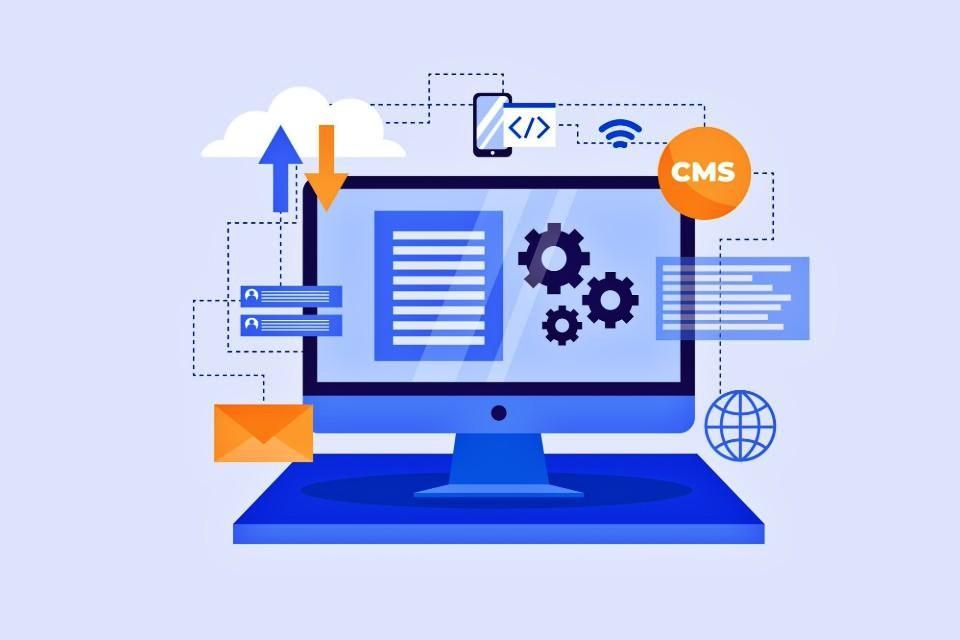Headless commerce architecture is transforming the way e-commerce businesses operate by decoupling the frontend (user interface) from the backend (server-side operations), primarily by using Representational State Transfer application programming interfaces (REST APIs).
Today, this approach is known to give businesses greater flexibility—enabling them to deliver more personalized customer experiences as well as make faster updates without disrupting core systems. Managing the frontend and backend independently also facilitates easy integration with third-party tools and applications, thus offering endless possibilities for customization and innovation.
To fully optimize this architecture, however, businesses must select e-commerce solutions that actually align with their specific goals and needs as well as the headless architecture philosophy. The right applications can do a lot to improve scalability, performance, and customer engagement—factors that are essential for using the “headless” approach to stay competitive in the fast-paced e-commerce setup.
This article will explore key applications that can enhance a headless commerce setup, providing you with a comprehensive toolkit to make the most out of this site architecture approach and help boost your e-commerce business’s operations.
Frontend Frameworks
Frontend frameworks are resources that provide developers with pre-built tools and components that streamline the creation of fast, interactive e-commerce experiences. These frameworks enable the development of responsive, mobile-friendly websites that ensure a seamless user experience across devices. Additionally, they come with features that can enhance site performance and search engine optimization (SEO), such as server-side rendering (SSR) and static site generation (SSG). These can greatly improve website load times and search engine visibility, boosting overall user engagement and conversions.
When selecting a fronted framework, look for one that promises flexibility and scalability. A good framework should integrate easily with your backend support dynamic in order to facilitate smooth data exchange. Also, opt for one that has a strong developer community behind it to aid in implementation and ongoing support.
Checkout and Payment Processing Solutions
A smooth checkout process remains crucial for converting shoppers into customers. Any friction during checkout, such as long forms or complicated payment options, can frustrate shoppers and lead them to abandon their purchases. Specialized checkout and payment processing solutions implemented under a headless setup can eliminate these barriers by simplifying the transaction process. These tools come with features that enable you to offer a seamless, secure, and flexible payment experience for your customers, thus helping you build trust and encourage repeat purchases from them.
To streamline your checkout process, make sure to use a payment processing solution that’s compatible with your e-commerce platform. This way, you won’t have any problems integrating it into your existing system and workflows. If you’re using Shopify, for instance, choose a reliable payment gateway like Maya Checkout. This Shopify payment gateway plugin supports multiple payment methods, such as credit cards, debit cards, e-wallets, and QR Ph, which will enable you to cater to various consumer payment preferences. It also utilizes top-of-the-line security measures to protect sensitive customer data and prevent fraudulent transactions. With the right payment processing solution, you’ll be able to maintain the headless structure and keep your customers’ trust and desire to purchase from you intact.
Content Management Systems (CMS)
The next addition you should make to your headless e-commerce structure is a dedicated content management system (CMS), which is essential for managing and delivering engaging content across your e-commerce platform. It allows you to create, edit, and publish content independently of the backend system, giving you greater flexibility and control over your website’s frontend experience. This means that you can easily make content updates—such as presenting product information, blog posts, and promotional materials—without disrupting other site functionalities.
A good CMS should support omnichannel content delivery. This ensures that your content is accessible and optimized across websites, mobile apps, and other digital platforms. Additionally, it should integrate seamlessly with your e-commerce backend, allowing real-time updates to product pages and promotional campaigns. Leveraging a headless CMS will enable you to maintain a dynamic, content-rich shopping experience that attracts and retains customers.
Order Management Systems
You will also be able to roll out an order management system (OMS) under the headless commerce architecture setup. An OMS helps you track and process orders from multiple sales channels, and it’s designed to streamline inventory management, fulfillment, and customer communication, thus ensuring smooth operations for your e-commerce business. Integrating an efficient OMS allows real-time synchronization between your backend and frontend, preventing issues such as overselling or delayed order updates.
To maximize the benefits of an effective OMS that works under the headless setup, look for one that supports multichannel sales. With this capability, you’ll be able to efficiently manage orders from various platforms, including your website, online marketplaces, and physical stores, all in one place. You should also ensure that the OMS provides accurate tracking to prevent stock discrepancies and to improve your fulfillment speed overall.
AI and Automation Tools
Artificial intelligence (AI) and automation tools are transforming the e-commerce landscape and work well under headless e-commerce architecture. In the future, they will further enhance business efficiency by streamlining e-commerce operations and improving customer engagement.
For example, AI-driven chatbots can provide instant responses to customer inquiries, reducing the need for human intervention and enhancing the overall shopping experience. Automation tools, such as dynamic pricing software and customer segmentation platforms, on the other hand, can be implemented under the headless setup and help with optimizing price strategies and delivering targeted marketing campaigns. Under headless architecture, you can use modern AI technologies and automation tools to boost efficiency, reduce operational costs, and provide a more personalized and responsive customer experience to online shoppers.
The e-commerce landscape is constantly evolving, and businesses that prioritize flexibility and innovation under models like that of headless commerce architecture have the best chances of staying competitive. With proper execution of the approach and the best combo of applications, you’ll be able to achieve a more agile and customer-centric business model that adapts to the market’s current demands.












